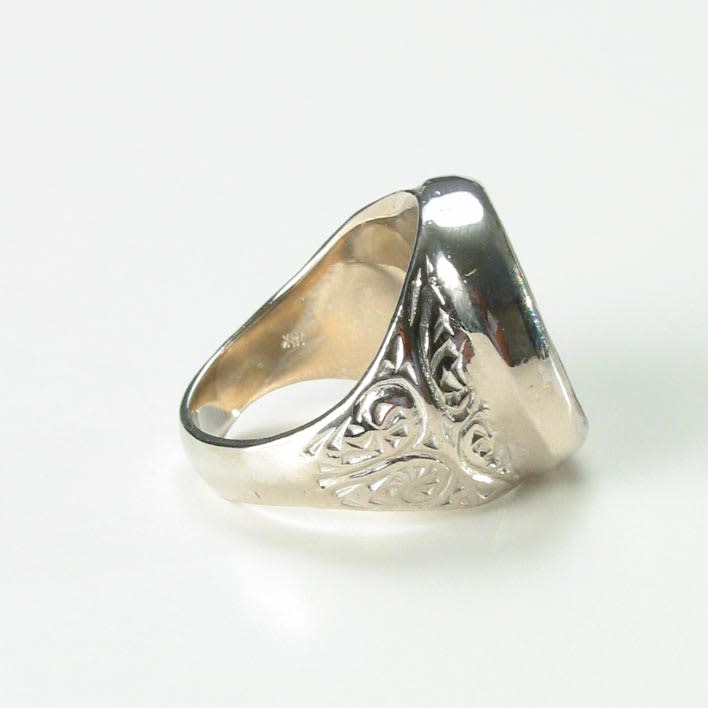Roman Carnelian Intaglio of the Bust of an Emperor, 100 CE - 400 CE
Carnelian-Gold
FJ.6806
Further images
This Genuine Ancient Seal Has Been Set in a Modern 18 Karat White Gold Rin The art of glyptics, or carving images on colored precious stones, is probably one of...
This Genuine Ancient Seal Has Been Set in a Modern 18 Karat White Gold Rin
The art of glyptics, or carving images on colored precious stones, is probably one of the oldest known to humanity. Intaglios, gems with an incised design, were made as early as the fourth and third millennia B.C. in Mesopotamia and the Aegean Islands. They exhibit a virtuosity of execution that suggests an old and stable tradition rooted in the earliest centuries. The tools required for carving gems were simple: a wheel with a belt-drive and a set of drills. Abrasives were necessary since the minerals used were too hard for a metal edge. A special difficulty of engraving intaglios, aside from their miniature size, was that the master had to work with a mirror-image in mind.
The portrait of an Emperor or a military general has been engraved onto the polished surface of this precious gemstone. Wearing a laurel wreath in his hair, the sign of a victorious ruler, this portrait is difficult to identify with certainty due to the idealization of his features. Often, each successive ruler adopted the symbols of power and prestige of the former. Thus, we can only identify the type, in this case an emperor portrait, and not the specific individual; although, in this case, Constantine the Great might be suggested. This intaglio demonstrates the absolute mastery of the Roman glyptic craftsmen. The level of detail and clarity is stunning considering the limited proportions of the polished surface of the gemstone and the difficulty carving such dense, hard material. Today set in a marvelous 18 Karat white gold ring, this gorgeous piece of jewelry invokes the glories of Ancient Rome. Wearing this ring reveals a love for the past and for the timeless beauty of the Classics.
The art of glyptics, or carving images on colored precious stones, is probably one of the oldest known to humanity. Intaglios, gems with an incised design, were made as early as the fourth and third millennia B.C. in Mesopotamia and the Aegean Islands. They exhibit a virtuosity of execution that suggests an old and stable tradition rooted in the earliest centuries. The tools required for carving gems were simple: a wheel with a belt-drive and a set of drills. Abrasives were necessary since the minerals used were too hard for a metal edge. A special difficulty of engraving intaglios, aside from their miniature size, was that the master had to work with a mirror-image in mind.
The portrait of an Emperor or a military general has been engraved onto the polished surface of this precious gemstone. Wearing a laurel wreath in his hair, the sign of a victorious ruler, this portrait is difficult to identify with certainty due to the idealization of his features. Often, each successive ruler adopted the symbols of power and prestige of the former. Thus, we can only identify the type, in this case an emperor portrait, and not the specific individual; although, in this case, Constantine the Great might be suggested. This intaglio demonstrates the absolute mastery of the Roman glyptic craftsmen. The level of detail and clarity is stunning considering the limited proportions of the polished surface of the gemstone and the difficulty carving such dense, hard material. Today set in a marvelous 18 Karat white gold ring, this gorgeous piece of jewelry invokes the glories of Ancient Rome. Wearing this ring reveals a love for the past and for the timeless beauty of the Classics.





